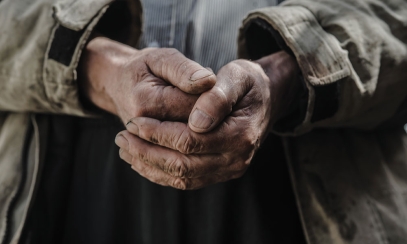Pray Alone or Together?
Why People Need Each Other Through the Church
Why People Need Each Other Through the Church
Q. We’ve seen a decline in Mass attendance over the last couple of decades. Has there been a change in the theology of communal worship? What are people missing by not being active in the life of the church?
A. By reason of our baptism, all of us are given this immense privilege of being able to participate in the Eucharist, to be able to share in the worship of the community, which is the holy sacrifice of the Mass. So this is, first of all, not a duty but a privilege – an immense privilege. That said, it is also a duty. Sometimes people don’t realize that. The greater sorrow is they also don’t realize it’s a privilege because they don’t understand the Mass. That explains an awful lot of the negligence that exists. But we must keep in mind that God constantly calls us to effort, and constantly reminds us that he is God. We have to join with Christ in worshipping him. And actually, Mass attendance fluctuates. In some areas, Mass attendance goes down, but in many places in the church, there is a revival. I came back some months ago from Nigeria, and what an incredible scene it is. The Masses begin at 5:15 a.m., every day of the week, and people fill the church. So there are moments of lapse on the part of all of us, but we must keep in mind that many people are stirring us on by their example. They prompt us to a greater fervor. Why? Because they have a greater realization of the duty and the privilege.
Q. What does a cardinal do?
A. Well, he gives interviews to magazines. [And is deeply appreciated for that]. Most of the cardinals are also a bishop or archbishop of a diocese and, as such, act as the primary catechist for their people. That role doesn’t change when a man becomes a cardinal. But being a cardinal adds an international dimension. It adds a participation in some of the different organizations within the Vatican. It brings with it the need to be present in Rome to participate in various other organisms by which the pope receives counsel. Basically, however, as a diocesan bishop or archbishop, his role is the same – but with more demands. There are more claims on his time, more appointments to be kept in trying to fulfill the duties involved in being named to various organizations. So, for instance, in Rome I am a member of the Congregation for Bishops and the Congregation of Divine Worship. This is an added commitment that was given to me as a cardinal over and above the pastoral role of trying to shepherd, with wonderful collaboration, the Archdiocese of Philadelphia.
Church of the month: Cathedral Basilica of St. Augustine
The parish of St. Augustine, established in 1594, is the oldest in the U.S. In 1976, the cathedral was elevated to a minor basilica by Pope Paul VI.
Origin:
The roots of the Cathedral-Basilica of St. Augustine began with the sighting of the Florida coast by Admiral Don Pedro Menendez de Aviles on Aug. 28, 1565, the Feast of Saint Augustine of Hippo. Menendez’s party came ashore on Sept. 6, at a spot they called Nombre de Dios (Name of God). Menendez himself landed on Sept. 8 and a Mass was celebrated giving thanks to God for the journey. The day was the Feast of the Nativity of Mary. The Spaniards then set about establishing a settlement, which Menendez named St. Augustine, in honor of the saint on whose feast day they had first seen land.
This was, in fact, the beginning of the parish community of St. Augustine, which was continually active from 1565 to February 1764 and from 1784 to present. The parish registers date back to Jan. 24, 1594 - the oldest European document of North American (north of Mexico) origin extant in our country.
The present Cathedral-Basilica of St. Augustine, a National Historic Landmark, was constructed in 1797 in the Spanish Mission style. After a fire gutted the church in 1887, it was restored by New York City architect James Renwick, who added the Spanish Renaissance-style bell tower.
In 1965, to commemorate the 400th anniversary of the first Mass, Archbishop Joseph Hurley, sixth bishop of St. Augustine, commissioned a renovation, enlarging and remodeling of the cathedral, the construction of the Prince of Peace Votive Chapel at the mission grounds and the construction of a 20-story illuminated cross.
Notable features:
• Style – The church is representative of Spanish Colonial and Renaissance Revival.
• Stations of the Cross – The oil paintings representing the stations of the cross are copies of the paintings found in the Vatican’s Pauline Chapel.
• Stained-glass windows and altars – The stained glass windows were created by Mayer Studios of Germany and the altars are of sculpted marble.
Words of wisdom – can you complete the proverb?
The Sacred Scriptures teach us “to get wisdom, to get understanding!” (Proverbs 4:5) Now it is time to put yourself to the test to see how far along you are in this quest by completing this proverb. Remember, no peeking into your Bible!
__________________, honor for a fool is out of place.
a. Like the sparrow in its flitting
b. Like snow in the summer, or rain in harvest
c. Like one who entangles the stone in the sling
(Answer: b – Prov 26:1)
Are you a heretic?
A theology professor once remarked that there were no new heresies, just old ones repackaged. To test the truth of this statement, consider this recent real-life scenario and see if you can name the error involved:
Body AND soul?
A science teacher who is Catholic laments the fact that a field trip to the “Body Works” exhibit had been cancelled due to concerns over the appropriateness of the subject matter. He complains, “I just don’t get it. As Catholics, we are only concerned with the spirit anyway; the body just isn’t important.”
What is at stake? The value and dignity of the whole human being (body and spirit)
What is the truth? This view disincarnates our spirits from our bodies and locates all value in the spirit alone. The church’s teaching regarding the importance of the incarnation of Jesus is subsequently called into question, along with the belief in the resurrection of the body (and therefore its eternal value) at the final judgment. This error can be described as having Gnostic and even Manichaean undertones, which both taught that the relationship between spirit (good) and matter (evil) was one of hostility and even of mutual exclusion.



